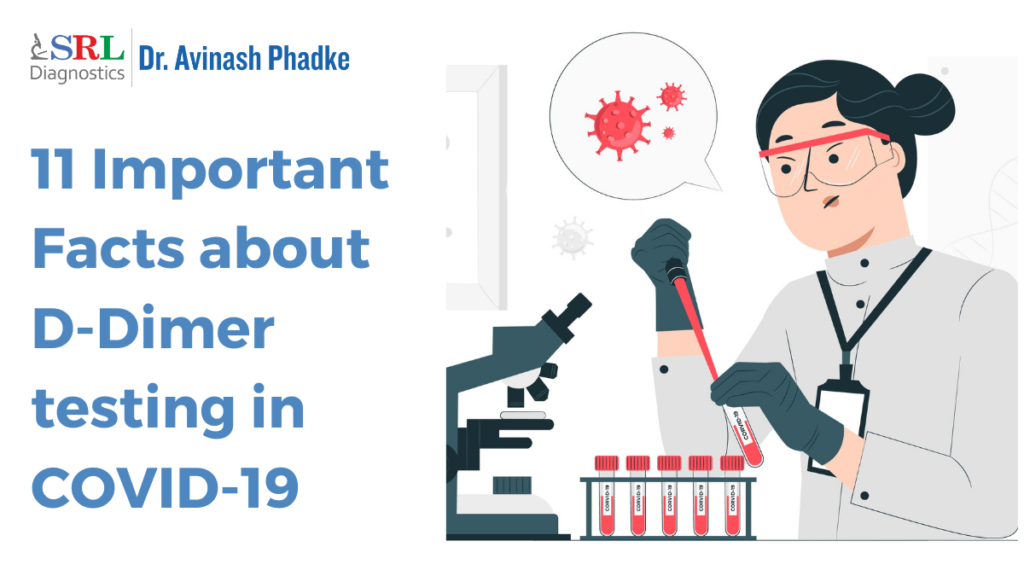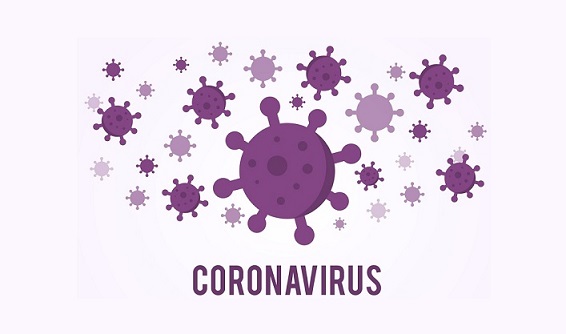
People have asked us about D-Dimer testing in COVID. Some of the commonly asked questions are:
Why do COVID-19 patients need the D-Dimer test?
Does COVID-19 Pneumonia cause a raised D-Dimer result?
How do doctors bring the D-Dimer back to normal?
- Does Severe COVID-19 have high D-Dimer levels ?
Treating those with a high D-Dimer more aggressively to reduce mortality. Doctors monitor a raised D-Dimer on a daily basis post-admission. The usual line of treatment is Low Molecular weight heparin(LMWH) or some other anti-coagulant. D-dimer on admission greater than 2.0 µg/mL (fourfold increase) could effectively predict in-hospital mortality in patients with Covid-19 - Can the D-Dimer remain elevated for a long time post-COVID-19?
D-Dimer can remain elevated weeks and even months after discharge from the hospital: While discharging the patient, hospitals perform a D-Dimer, CRP and Ferritin test. One must continue Anticoagulant therapy for 4-6 weeks in a high D-Dimer at discharge. - What does an elevated D-Dimer mean?
An elevated D-Dimer has links to a higher incidence of blood clots. In critically ill patients with COVID-19, anticoagulant therapy in those who had a high D-Dimer reduced the mortality by reducing clot formation - What is the high value of D-Dimer in COVID-19?
The D-dimer value of 2.025 mg/L(2.025 µg/mL) is an optimal probability cutoff for judging the risk of severe covid. - What is NLR in COVID-19?
How is it related to D-Dimer?: NLR= Neutrophil: Lymphocyte ratio. Severe COVID-19 has An elevated ratio(>3.13). To dynamically observe the ratio of D-Dimer and NLR was more valuable during the prognosis of COVID-19. A higher ratio of these 2 parameters or a sharp rise in the same can indicate a poorer prognosis. - What is D-Dimer?
D-Dimer is a byproduct when your body forms small fibrin clots. These clots break down and give rise to D-Dimer which is the last by-product. Therefore, D-Dimer is only present in higher amounts when your body is forming clots. This happens in COVID-19 where multiple clots can be present in the body. These clots can give rise to an elevated D-Dimer. - What is the Normal range of D-Dimer? What is considered a high value of D-Dimer in COVID-19?
The Normal Range of D-Dimer is up to 0.5 µg/mL or 500 ng/ml. In some instruments, it is <1.1 mg/L. It is important to look at the type of machine and technology before interpreting this report. The normal range can vary with increasing age. Usually, Multiply the age by 10 to get the upper normal limit. - Is D-Dimer also elevated in other conditions?
D-Dimer levels are also elevated in other conditions such as pregnancy, liver disorders, Major surgery, Inflammation etc. - How should D-Dimer be measured?
D-Dimer if measured by the ultrasensitive method using Immunoturbidometry is very sensitive and can detect even a single clot. Another method is the latex agglutination method. This has lower sensitivity. This may not be elevated in single clots but only with multiple clots. Therefore, it is more sensitive for DIC than the other method using immunoturbidimetry. - What does a negative D-Dimer report mean?
The Main utility of D-Dimer is to rule out thromboembolic events completely. Therefore, it has a high negative predictive value - Can a D-dimer be elevated after 6 months post-COVID? What does it mean?
Elevated values after 6 months can possibly give an idea about the recurrence of a blood clot
Does D-Dimer remain elevated for a long time?
For more information about D-dimer in COVID-19 please read this article.
If you have any queries get in touch with us on care@phadkelabs.com or WhatsApp us on 9819938916

